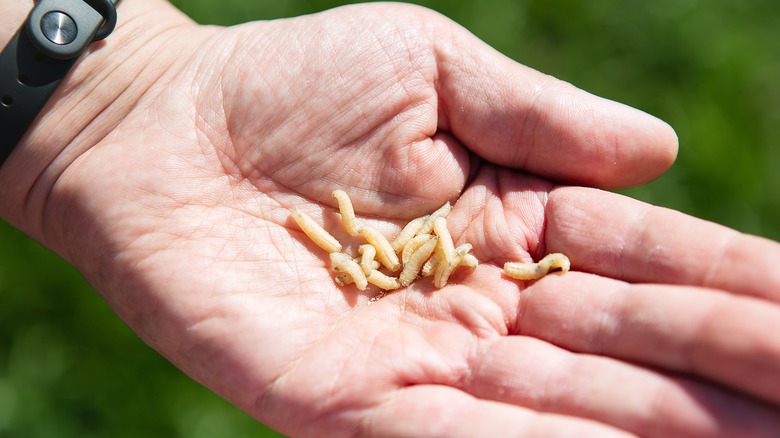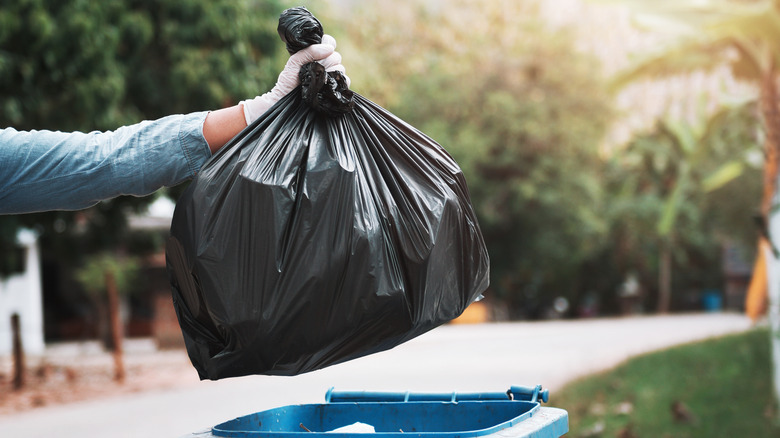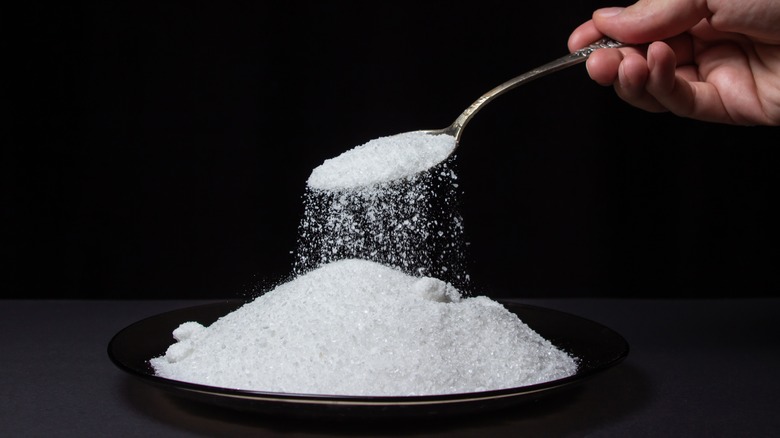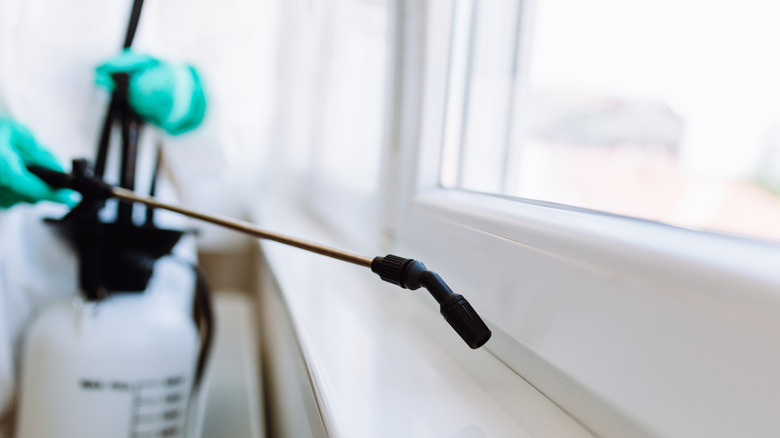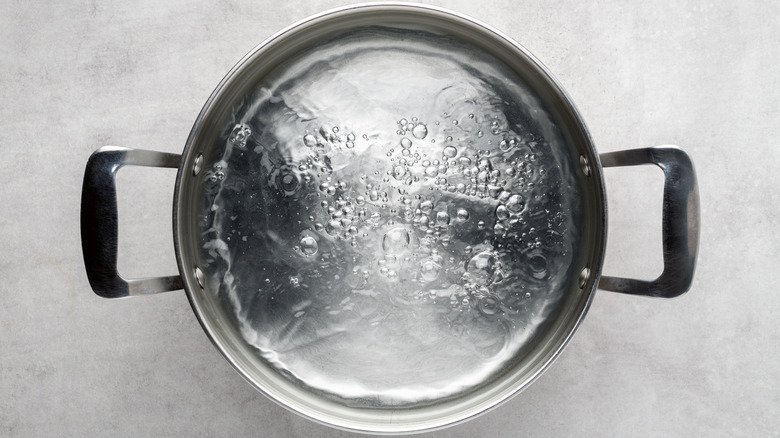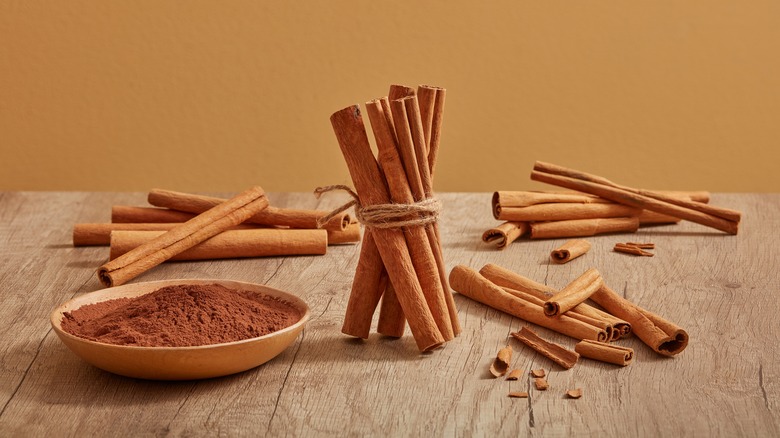How To Get Rid Of Maggots In The House
We may receive a commission on purchases made from links.
Dealing with pests in your home is never a pleasant experience. Even a random spider or water bug is an unpleasant experience, let alone a whole infestation. Some bugs, though, are more dangerous, as well as difficult to get rid of. One such dangerous and persistent pest is maggots. Per DenGarden, maggots are young flies in the larva stage. Once flies lay eggs, those eggs quickly turn into maggots — within a day usually. It takes anywhere from 14 to 36 days for eggs to turn into full-fledged flies, meaning if you see maggots, you need to act quickly.
Maggots are also very dangerous, according to Wheelie Bin Cleaning Service, as they are carriers of numerous harmful bacteria. They won't bite, but they can transmit bacteria through the surfaces they touch. Maggots can appear in your home for a variety of reasons, such as improperly storing and disposing of food or other waste products. Luckily, there are multiple ways to get rid of maggots.
Remove any trash from your home
One of the first things you should do when you find maggots in your home is to remove the site of the infestation. It will likely be in your trash, but Solutions Pest & Lawn recommends checking other areas of your home like pantries which can have old and rotting forgotten food. Do a thorough sweep of your house to make sure they haven't found any other random hiding spots.
Next, you need to thoroughly clean your home, particularly the area where you found the maggots. As noted earlier, they can carry dangerous bacteria that could easily be transferred around surfaces and appliances in the kitchen. Aside from your regular routine of cleaning countertops and mopping the floor, make sure you thoroughly disinfect everything. Disinfecting and cleaning are not the same things — cleaning simply removes surface dirt and debris, as well as some germs. Disinfecting, however, kills germs and bacteria, and requires heavier-duty products like bleach or alcohol, notes MedlinePlus.
Dehydrate them with salt
You may want to kill the maggots before simply throwing them out with the trash, especially if you aren't due for a trash pick-up for a while. Since maggots feed on trash, they will only further develop into flies, which can be an issue down the line. Grove Collaborative recommends using salt to kill any maggots you find. As they note, maggots, like all living things, need water to survive. Salt is dehydrating and can remove any moisture and water in their system, effectively killing them.
You can use any salt, but a large, pourable container of simple table salt will likely be the easiest and most cost-efficient option. Simply dump a generous amount of salt on top of them. They should very quickly dry out and die, where they can be easily disposed of. For a more heavy-duty method, Trash Cans Depot recommends using a 50/50 mixture of salt and calcium hydroxide, also known as lime. Be careful, though, as lime can also irritate human skin.
Rely on chemical pesticides
Once you have the maggots securely out of your home, you need to ensure they don't come back, and that any lingering bugs won't make it to the fly stage of their life cycle. There are plenty of products on the market that are geared towards flies and maggots, but Solutions Pest & Lawn specifically recommends a combination of two specific high-grade pesticides.
The first is Flex 10-10, which is a professional-grade insecticide that is safe to use indoors. That being said, children and pets should be kept away from the site of application (via Solutions Pest & Lawn). Another useful product is Martin's IG Regulator. It works by killing any maggots upon contact, as well as upsetting the breeding and life cycle of any remaining flies, and costs around $26 for 4 ounces.
Begin by mixing a quarter gallon of water with 6.4 ounces of Flex 10-10 in a pump sprayer, then add another quarter gallon of water. Mix well again, and then add 1 ounce of Martin's IG Regulator with one more gallon of water. Thoroughly combine and spray your home — specifically around doors, windows, and by the trash can.
Try boiling water and vinegar
Getting rid of maggots from your trash can or an old bag of rotten produce is relatively easy, but some areas of the home may pose unique challenges for pest removal. One such area can be your sink drains, especially those with garbage disposals. Leftover food stuck in your garbage disposal is ideal for maggots to nest in. In this situation, Grove Collaborative recommends first to use boiling water. Maggots are small and fragile, and the extreme temperatures of boiling water will instantly kill them. This method also works for garbage cans, but be careful not to melt any plastic.
Similarly, you can use vinegar to kill any maggots in hard to reach areas. Combine one part white distilled vinegar with three parts water (you can combine both methods and use boiling water if you want), and pour it in the area where the maggots are. Let it sit for at least an hour as the acidity kills the pests.
Use fly traps strategically
Despite your best efforts, there's a chance that some of the maggots may survive all of the above methods and turn into flies. To avoid having to then deal with and treat a fly infestation, it's a good idea to set up preventative measures ahead of time. One method recommended by Solutions Pest & Lawn is to use a UV light fly trap. There are a few different options on the market, but the general premise is the same. The flies are attracted to the UV light, and then either get stuck to a sticky surface, or electrified.
However, UV light traps sometimes create a loud buzzing sound, and will attract all the pests in your house. For this reason, some people prefer other, less noisy methods, including fly tape, which attracts the flies to a bright piece of sticky yellow paper, and DIY fly traps. There are numerous ways to make your own fly traps, but one of the easiest ones involves simply adding a piece of fruit and half a cup of water to a bottle or jar and then rolling up a piece of paper like a funnel and sticking it in the top. The flies will funnel into the jar for the fruit and drown in the water, explains Love to Know.
Pour a mixture of cinnamon and water to get rid of maggots in a trash can
If you've spotted maggots in one of your trash cans, you'll want to act quickly to get rid of them — and keep flies from laying more eggs that will turn into new maggots. Fortunately, a spice that is likely in your pantry can help you with this task. That's right, cinnamon can keep maggots from infesting your trash cans. To take advantage of this powerful spice, begin by taking your trash can outside. Then, mix cinnamon with boiling water and pour it into the trash can, directly over any maggots you see. Within 6 hours, the cinnamon should have killed any maggots that were present. Once the maggots have all died, rinse out the trash can and disinfect it before bringing it back inside.
Maggots aren't the only ones who detest the smell of cinnamon. Flies do as well, so sprinkling some cinnamon on or around your trash can may help prevent them from laying new eggs. The scent of the powder is very overwhelming to the pests, so they'll fly away when they detect it. Similarly, placing cinnamon sticks or a few drops of cinnamon essential oil in the bottom of the bin can help repel them.
